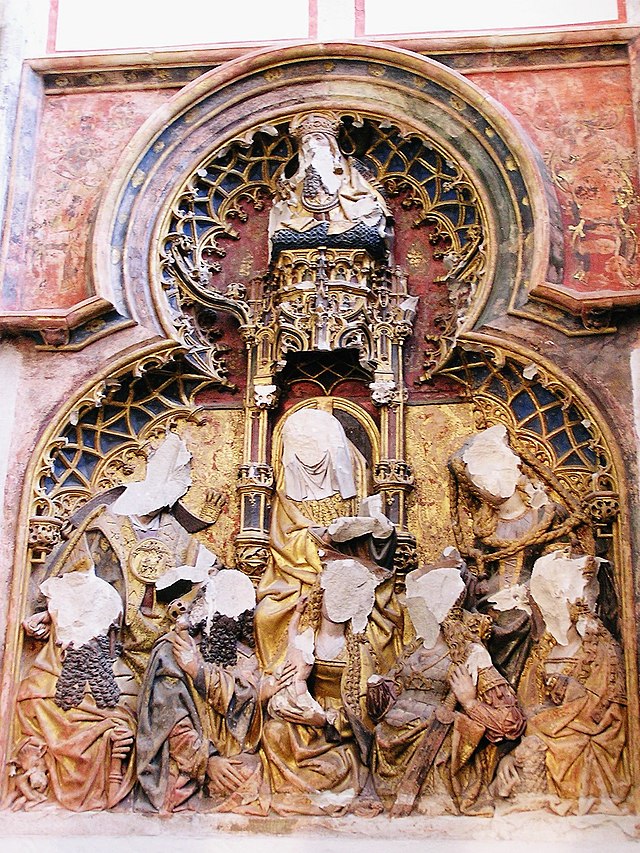Iconoclasm
avoidance or destruction of religious, political or cultural icons From Wikipedia, the free encyclopedia
Iconoclasm is a belief that people should reject religious images (like icons or monuments) by destroying or avoiding them. This is the opposite of idolatry, the worship of icons. Iconoclasm happens during important political or religious changes. It is generally distinct from destruction by foreigners, for example by Spanish conquistadors in America. The term does not generally include the specific destruction of images of a ruler after his death or overthrow (damnatio memoriae), for example Akhenaten in Ancient Egypt.

People who support iconoclasm are called iconoclasts. This word is also used for people who are against established dogma or conventions. Similarly, people who revere or venerate religious images are called idolators. In an Eastern Orthodox context they are known as iconodules, or iconophiles.
Iconoclasm may be carried out by people of a different religion, but is often the result of sectarian disputes between factions of the same religion. The two Byzantine outbreaks during the 8th and 9th centuries were unusual because the use of images was the main issue in the dispute, rather than a by-product of wider concerns. In Christianity, iconoclasm has generally been motivated by a literal interpretation of the Ten Commandments, which forbid the making and worshipping of "graven images" of God.
References
Wikiwand - on
Seamless Wikipedia browsing. On steroids.
